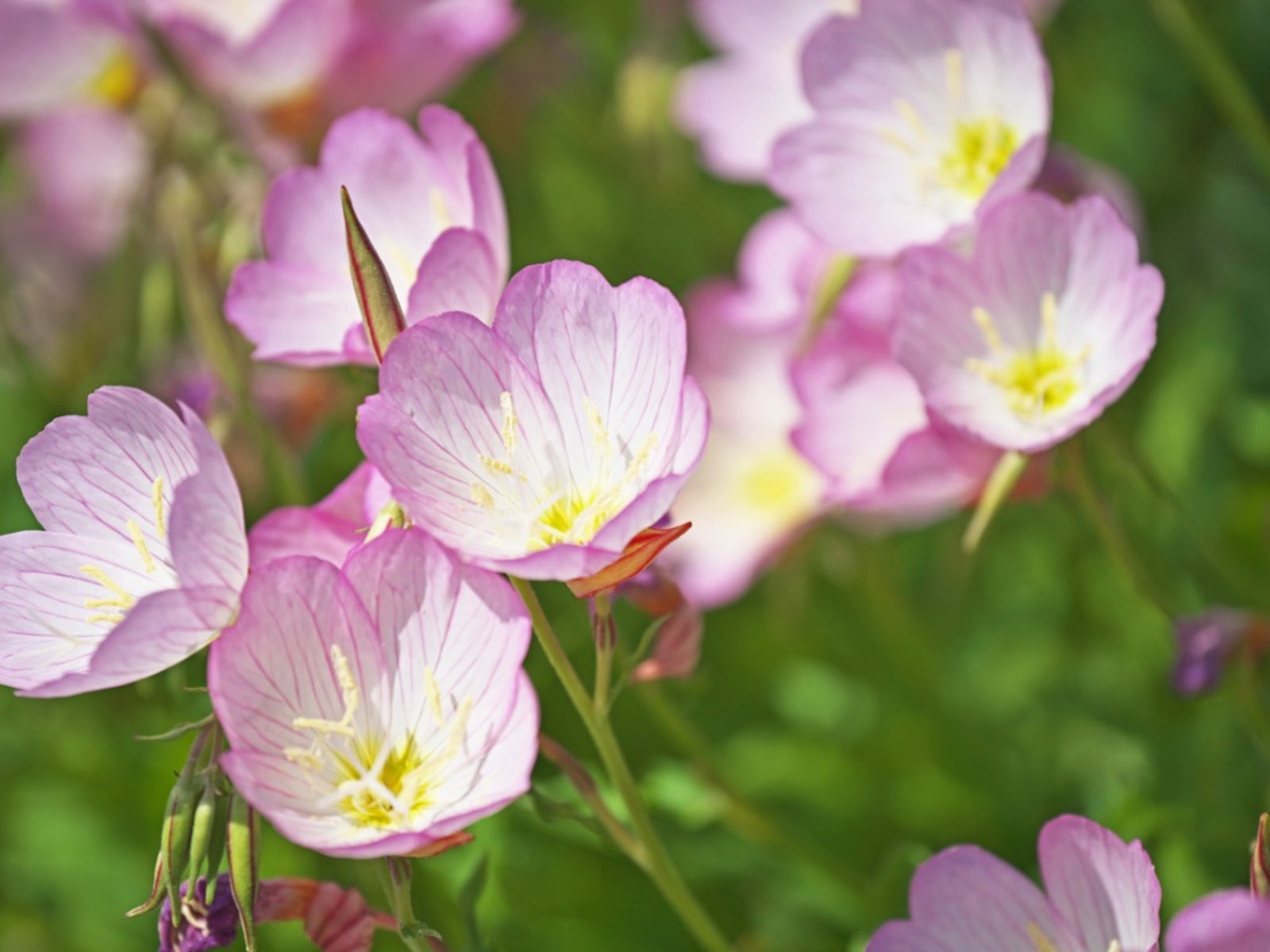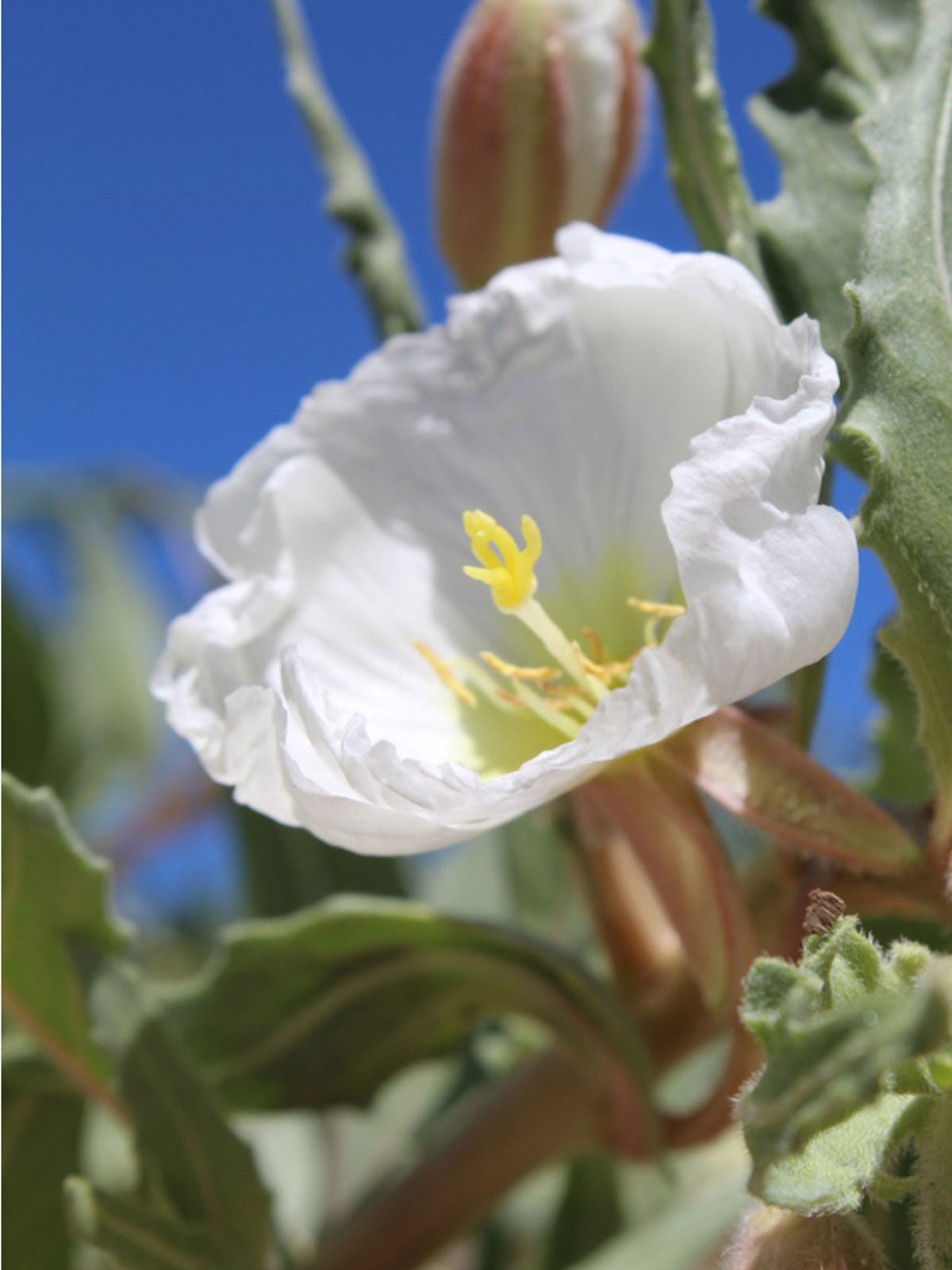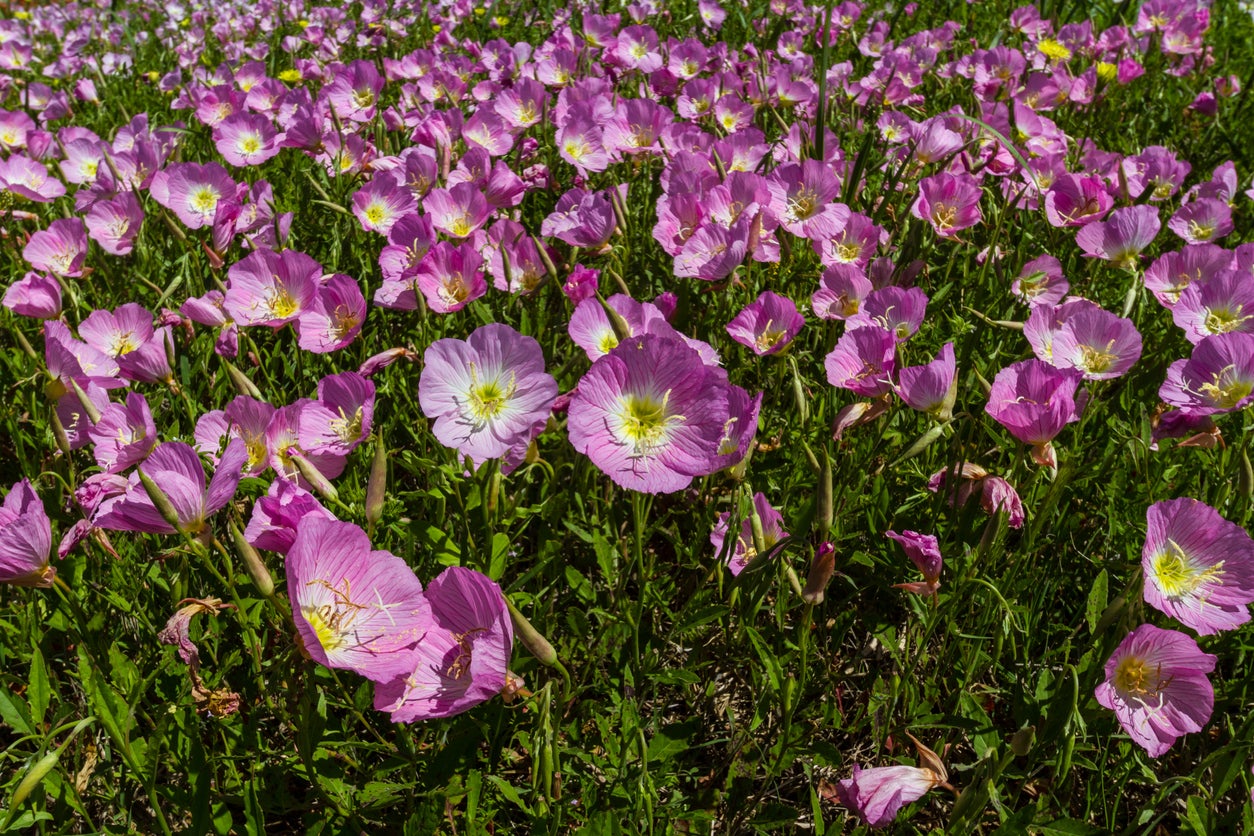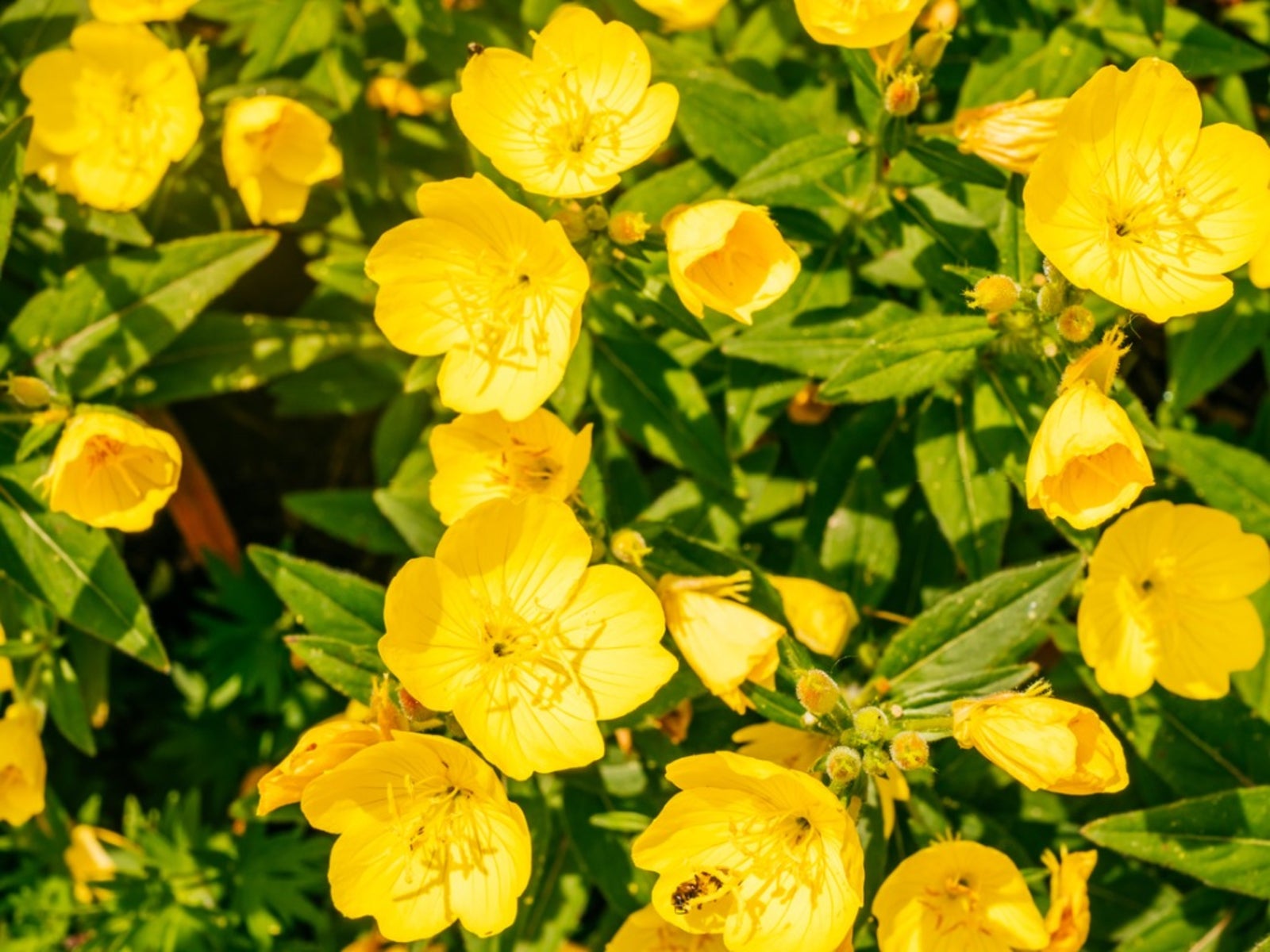Growing Pink Evening Primrose – How To Care For Pink Evening Primrose


Pink evening primrose plants are showy when in bloom and make a good groundcover. These plants can also be aggressive, though, spreading rapidly and taking over perennial beds under certain conditions. If you know how to contain this plant, it can add a nice element to your garden.
What is Pink Evening Primrose?
Pink evening primrose is Oenothera speciosa and is also sometimes called showy evening primrose and pink ladies. It is native to the southeastern U.S. and is considered an attractive wildflower in many locations. Pink evening primrose plants grow low to the ground and spread vigorously in an informal and loose way. The foliage of pink evening primrose is dark green with some variation. The flowers are about 2 inches (5 cm.) across with petals that are almost completely fused. They are most often pink, but the flowers can also be pink to white or entirely white. It is closely related to the yellow evening primrose.
How to Grow Pink Evening Primrose
Growing pink evening primrose can be challenging only because it spreads readily and sometimes aggressively. It has the potential to take over your perennial bed and push out other plants. If properly managed, though, these flowers provide pretty and showy colors beginning in late spring and through much of the summer. One way to avoid the rapid spread of pink evening primrose is to grow it in containers. You can even bury the containers in a bed, but this may not be foolproof. A more effective way to manage the spread is to give the plants the right conditions. Pink evening primrose spreads most aggressively when conditions are wet, and soil is fertile. If you plant it in a bed that drains well, has poorer soil, and is generally dry, it will grow in attractive clumps. Care for pink evening primrose isn’t difficult, considering how readily these plants grow and spread. It should have full sun and will tolerate heat, although extreme heat may limit its growth. In addition to keeping these flowers dry to prevent their aggressive spreading, another reason not to overwater is that it can develop a bacterial spotting. Growing pink evening primrose will add nice color and groundcover to your garden, but only if you can contain it. Never plant it outside of a contained bed, regardless of the conditions or you may find your entire yard being taken over by it.
Gardening tips, videos, info and more delivered right to your inbox!
Sign up for the Gardening Know How newsletter today and receive a free copy of our e-book "How to Grow Delicious Tomatoes".

Mary Ellen Ellis has been gardening for over 20 years. With degrees in Chemistry and Biology, Mary Ellen's specialties are flowers, native plants, and herbs.
-
 Looking For Plants To Give You The Soft And Fuzzies? Try These 5 Fuzzy Leaf Plant Options
Looking For Plants To Give You The Soft And Fuzzies? Try These 5 Fuzzy Leaf Plant OptionsLovers of texture, drama, silver foliage and tactile plants will adore these special sensory garden additions. These fuzzy leaf plant options will leave you all aglow
By Susan Albert
-
 Get Ready For A Summer Of Hummers! Grow These Full Sun Hummingbird Plants and Flowers
Get Ready For A Summer Of Hummers! Grow These Full Sun Hummingbird Plants and FlowersIf you’re lucky enough to enjoy a sunny backyard, make sure you are maxing out on your pollinator opportunities and grow these full sun hummingbird plants and flowers
By Tonya Barnett
-
 Tufted Evening Primrose Care – Growing Evening Primrose Wildflowers
Tufted Evening Primrose Care – Growing Evening Primrose WildflowersOften used in xeriscape gardens, tufted evening primrose plants follow the traditional blooming habit of other members of the family – with open blooms in evening hours. These lovely wildflowers are great additions to nighttime moth gardens. Learn more here.
By Becca Badgett
-
 Controlling Mexican Primrose Spread – Tips For Getting Rid Of Mexican Primrose
Controlling Mexican Primrose Spread – Tips For Getting Rid Of Mexican PrimroseThough creating a profusion of pink blooms in borders, the invasive nature of Mexican primrose flowers often causes many growers to look for solutions in removing the plants. Click this article for more info on Mexican primrose control.
By Tonya Barnett
-
 Yellow Evening Primrose Plant: Wildflower In The Garden
Yellow Evening Primrose Plant: Wildflower In The GardenYellow evening primrose is a sweet little wildflower that does well in almost any part of the U.S. As the name suggests, the yellow evening primrose blooms at night. Learn more growing info in this article.
By Caroline Bloomfield